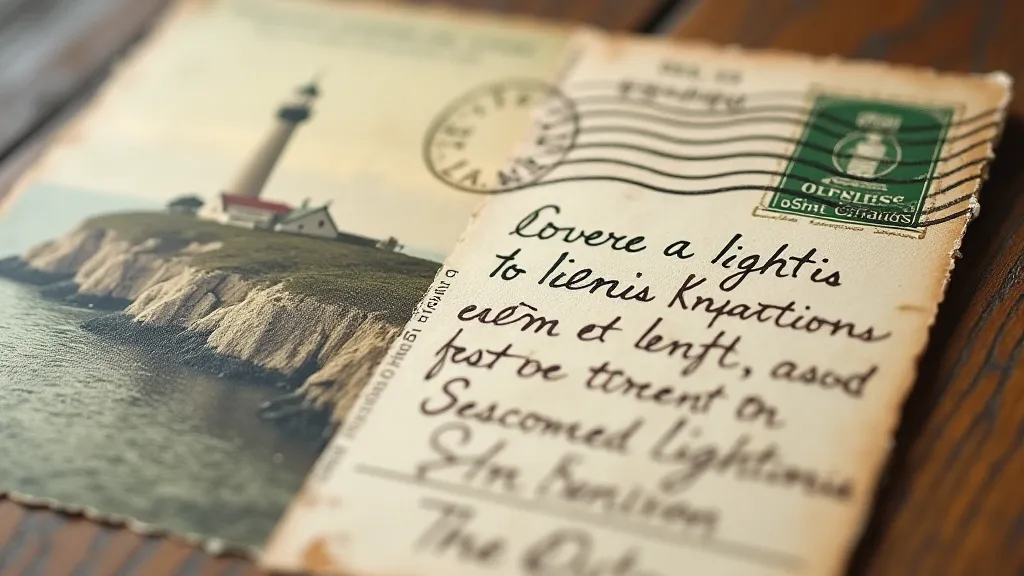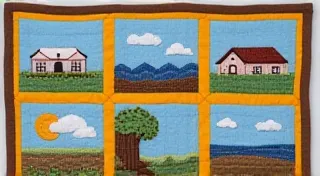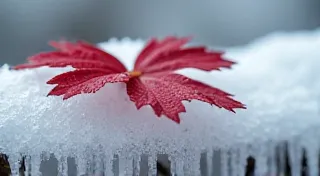Beyond the Horizon: The Yearning Embodied in Early Maine Postcard Views
Maine. The name conjures images of granite coastline, whispering pines, and a quiet, enduring spirit. For generations, it's been a refuge, a dreamscape etched into the American imagination. And that dream, that yearning, found a particularly poignant expression in the world of vintage postcards, especially those depicting scenes from Maine’s past. More than just simple views of places, these fragile paper relics tell a story – a story of hope, of escape, and of a profound longing for something beyond the everyday.
The rise of the postcard in the late 19th and early 20th centuries coincided with a period of immense societal change. Mass migration from rural areas to burgeoning industrial cities was common, yet the promise of prosperity often came at the cost of a disconnected and isolating existence. Travel, once a privilege for the wealthy, began to become more accessible thanks to advancements in transportation like the railway. The postcard, arriving at a mere penny, became a tangible link – a visual message sent across distances, a tiny window into a world that felt both near and impossibly far.
A Penny for Paradise
Maine's popularity as a tourist destination began to swell around the 1880s. The state offered something different than the bustling cities of the East Coast or the developing West – a sense of tranquility, of connection with nature, a return to a simpler way of life. Postcard publishers, keenly aware of this burgeoning desire, flooded the market with idyllic scenes: lobster boats bobbing in Casco Bay, quaint villages nestled amongst rolling hills, the imposing grandeur of Mount Katahdin piercing the sky. These weren’t mere representations; they were carefully curated visions of paradise.
The craftsmanship involved in creating these early postcards is remarkable. Often, photographs were hand-tinted, adding a layer of romanticism and softening the harsher realities of the landscape. The lithographic printing process, while capable of producing a large number of cards, still required skilled artisans to create the printing plates. Examine a vintage Maine postcard closely, and you’re likely to notice the subtle nuances of the hand-tinting, the slight imperfections that speak to the human touch involved in its creation. These aren’t mass-produced items; they're works of art, albeit miniature ones.

The Message Behind the View
But it's not simply the beauty of the scenes that makes these postcards so compelling. It’s the unspoken story they tell. Consider the recipient – often a relative or friend living far away, perhaps in a crowded city or a more demanding environment. The postcard wasn’t just a pretty picture; it was a symbol of hope, a promise of a better life. It was a whispered invitation: "Come. Escape. Find peace here."
I remember discovering a small collection of postcards in my grandmother's attic. Many were addressed to her from a great aunt who had moved to Bar Harbor in the 1920s. The messages were brief – "Wish you were here," "Having a lovely time," "The sunsets are beautiful." Yet, within those simple phrases, I sensed a depth of emotion, a yearning for connection that transcended the physical distance. These simple sentiments, frequently found on postcards from this era, reflect a broader desire for connection and escape that permeated American life during that period. Further exploration of this era reveals a fascinating look at the postal network and the shared experiences of a disappearing era, as detailed in "Bound by Thread."
It's easy to imagine the lives of the people who sent and received these postcards. The factory worker dreaming of a simple cottage by the sea, the immigrant family sending a glimpse of their newfound life to loved ones left behind, the city dweller longing for the clean air and quiet solitude of the Maine wilderness. These postcards weren’t just about a place; they were about a dream, a hope for something more.
The Language of Longing
The back of the postcard, often overlooked, holds its own significance. The carefully penned messages, the hurried script, the stamps from distant lands - they all contribute to the postcard's narrative. Often, the messages aren’t effusive celebrations of joy, but rather quiet reflections on life, on family, on the enduring power of place. They are fragments of personal histories, preserved in fragile ink.
The selection of imagery itself reveals a pattern. While bustling towns and thriving industries were certainly represented, it was the quieter, more pastoral scenes – the rocky coastline, the dense forests, the serene lakes – that resonated most deeply with the public. These were the places that symbolized escape, the spaces that offered respite from the anxieties of modern life. The careful selection of these images also reflected a broader cultural narrative, focusing on the beauty and serenity of Maine's landscapes, something akin to the careful preservation of the architecture of a past life.

The Silent Story of Color and Light
The hand-tinting process, a defining characteristic of early Maine postcards, wasn’t just about adding color; it was about shaping perception. The subtle hues – the blush of a sunset, the verdant green of the pines – were meticulously applied to evoke a sense of nostalgia and romance. The color palette itself spoke volumes, often emphasizing the idealized vision of rural Maine, a stark contrast to the growing industrial landscape of the time. Observing these postcards reveals a kind of “chromatic whisper,” a soft language of color that conveys a depth of emotion that transcends words, a deeper look into which can be found in a detailed examination of these fading palettes.
Preserving a Legacy
Collecting vintage Maine postcards is more than just acquiring pretty pictures; it’s an act of preservation, a way of connecting with the past. Each card tells a story, offers a glimpse into a different era, and reminds us of the enduring power of human connection. While condition is undoubtedly a factor for serious collectors, even cards with minor wear and tear hold a unique charm – they bear the marks of time, the evidence of their journey through the past.
Restoration, when approached carefully, can help preserve these fragile treasures. Gentle cleaning with archival-safe materials can remove surface dirt and grime. However, it's important to avoid aggressive techniques that could damage the ink or paper. Ultimately, the goal is to stabilize the card and prevent further deterioration, not to erase its history.
There’s a certain poignancy in holding a postcard that has traveled across time, a tangible link to someone who once held it in their own hands, who perhaps shared the same yearning for a life beyond the horizon. It's a reminder that even in a rapidly changing world, the human desire for connection, for escape, for a glimpse of paradise, remains constant. The lives represented by these postcards, the reasons they were sent, all intertwine to tell a larger story of a community bound together, much like the careful architecture and construction of the time. To delve further into this era, explore the architecture of a past life, captured in brick and stone.

The world of vintage Maine postcards offers a window into a bygone era, a time when a penny could buy a glimpse of paradise, and a simple image could convey a world of unspoken longing. It's a legacy worth preserving, a story worth sharing, a reminder that even the smallest of objects can hold the weight of human dreams. Studying these postcards offers a glimpse into the lives of those who sent and received them, their hopes and dreams etched onto fragile paper.
The enduring appeal of these postcards lies not only in their aesthetic beauty but also in their ability to transport us to a different time and place. They offer a unique perspective on the past, allowing us to connect with the hopes and dreams of those who came before us. They are a testament to the power of simple objects to evoke powerful emotions and to preserve memories for generations to come. These snippets of lives, captured on paper, paint a vivid portrait of a community and a culture, much like the way individual bricks combine to form the foundation of a building.
The preservation of these postcards isn't just about protecting a piece of history; it's about safeguarding a vital link to our shared human experience. They remind us that even amidst the rapid pace of change, the fundamental desires for connection, beauty, and escape remain constant. As we gaze upon these fragile relics of the past, we are invited to reflect on our own place in the grand tapestry of human history and to appreciate the enduring power of simple things.





